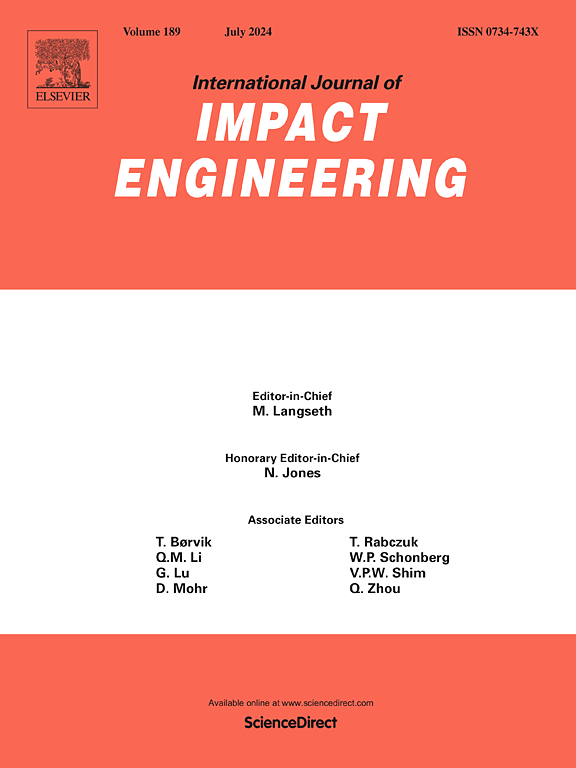Data-driven parametric modelling of split-Hopkinson pressure bar tests on cohesive soils
IF 5.1
2区 工程技术
Q1 ENGINEERING, MECHANICAL
International Journal of Impact Engineering
Pub Date : 2025-01-16
DOI:10.1016/j.ijimpeng.2024.105218
引用次数: 0
Abstract
Soil-filled wire and geotextile gabions stand as vital bulwarks in military bases, harnessing soil’s innate capacity to absorb shock and safeguard both personnel and critical assets from blast and fragmentation effects. Yet, the dynamic response of cohesive soils under extreme loads remains largely unexplored, leaving engineers grappling with a significant void in knowledge as they strive to fortify structures against emerging threats. This paper considers the high-strain-rate behaviour of kaolin clay using the split Hopkinson pressure bar in both confined and unconfined configurations, with a range of moisture contents representing dry, partially-saturated and saturated conditions. Analysis of the results indicates distinct phase behaviours in transmitted and radial stress based on strain rate, moisture content and confinement. Leveraging cutting-edge machine learning models such as the Proper Orthogonal Decomposition (POD) and sparse Proper Generalised Decomposition (sPGD), data-driven parametric models were developed based on the experimental data. These models enable the prediction of cohesive soil behaviour at specified strain rate and moisture content, enabling engineers to rapidly predict soil behaviour in response to new threats and ground conditions.
求助全文
约1分钟内获得全文
求助全文
来源期刊

International Journal of Impact Engineering
工程技术-工程:机械
CiteScore
8.70
自引率
13.70%
发文量
241
审稿时长
52 days
期刊介绍:
The International Journal of Impact Engineering, established in 1983 publishes original research findings related to the response of structures, components and materials subjected to impact, blast and high-rate loading. Areas relevant to the journal encompass the following general topics and those associated with them:
-Behaviour and failure of structures and materials under impact and blast loading
-Systems for protection and absorption of impact and blast loading
-Terminal ballistics
-Dynamic behaviour and failure of materials including plasticity and fracture
-Stress waves
-Structural crashworthiness
-High-rate mechanical and forming processes
-Impact, blast and high-rate loading/measurement techniques and their applications
 求助内容:
求助内容: 应助结果提醒方式:
应助结果提醒方式:


